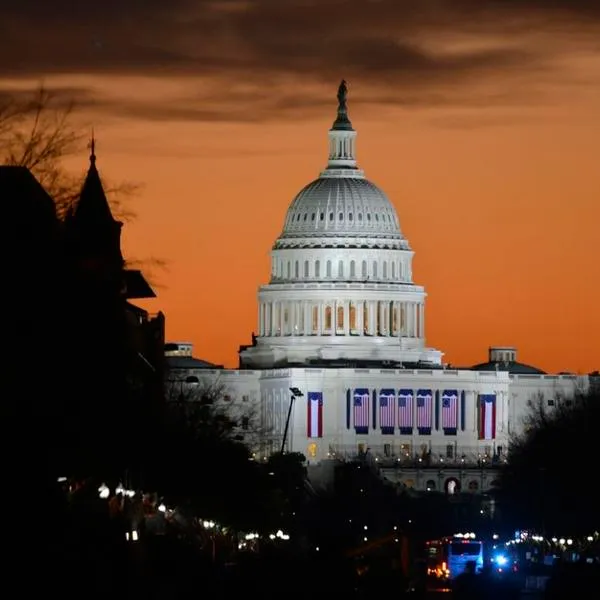Here we are.
After six years, we are once again in a complete government shutdown. Before midnight on September 30, 2025, legislators from the Democratic and Republican parties were unable to reach any deal on an appropriations package that would continue to fund the government past the midnight deadline. Republicans inherently were opposed to any measure that would result in a government shutdown, but they were legally required to get the support of sixty senators in order to pass the filibuster. With Senator Rand Paul of Kentucky (R-KY) opposed to the measure due to budgetary concerns, Republicans needed a staggering eight votes to fund the government. However, Democratic leaders chose to seize the moment to deliver on their issues – rolling back Medicaid and SNAP reforms implemented in the One Big Beautiful Bill Act, as well as reinstating Obamacare subsidies that would expire by the end of this year. These partisan disagreements made the two sides unable to reach any commonsense agreement nor deal, leading the federal government to shutdown on the midnight of September 30th, 2025.
What is a government shutdown?
Essentially, a government shutdown is when the United States government, or any government in general, is unable to fund or pay the expenses of the government’s operation. Governments require hefty sums of money to fund departments, agencies, wages, and many other bureaucratic systems. In order to fund the aforementioned, Congress must pass an annual appropriations bill by the end of the fiscal year, which is September 30. Like many other bills and directives, any appropriations bill requires 60 votes to pass the filibuster, which has been increasingly criticized by members of both parties. Often such moments in political history lead to tedious negotiations by leading officials to scrap up a plan that negotiates some compromises, and continues to fund the government. This time, however, it did not resolve itself this way. The effect is that many “non-essential” government workers will be furloughed, or put on unpaid leave while the government works to bring back funding. “Essential workers”, such as air traffic controllers and TSA agents, will be mandated to continue working even without any pay. When the last government shutdown occurred, back in early 2019, large numbers of federal workers resigned from their jobs due to stress, piling payments and meager conditions. Some even attempted, or committed suicide. This has driven Congress since then to seek to resolve any disagreements and fund the government past the fiscal year deadline. This time, it looks like nobody wanted it that way.
How are everyday Americans impacted by the shutdown?
While the impacts of any government shutdown are not immediate, the longer a shutdown lasts the more profound the consequences will be. Typically within a couple of days, most National Park Service sites close down, including those in National Parks, Forests, Monuments and many others. In 2019, many sites were vandalized, trampled and environmentally devastated, which pushed some lawmakers to avoid such repercussions from occurring once again. However, many essential services will stay the same. Medicaid, Medicare and SNAP recipients will continue to receive the designated benefits, if the government shutdown lasts less than three months. To date, the longest shutdown has been less than one and a half months, lessening the plausibility of this actually happening.
Perhaps the most profound of influences that the government shutdown has are felt by federal employees. Regardless of one’s position, a government shutdown affects every single government employee in some way. During a typical government shutdown, “non-essential” employees are furloughed, meaning they are put off work temporarily without pay. All wages missed during the “Essential” employees are mandated to continue working, even without a paycheck or any source of monetary support. The numbers for both of these categories are high – approximately 600,000 “non-essential” employees are currently furloughed, according to the New York Times. Thanks to the Government Employee Fair Treatment Act of 2019, every furloughed government employee will receive the backpay they missed for the duration of the shutdown. Still, there are hundreds of thousands of “essential” workers in our federal government, and those are going to feel the burden of long hours and no pay.
Why no agreement?
This may be the most vital question our lawmakers have to ask themselves – why is funding the government such a daunting task? The answer is much more complicated than it seems at first glance due to the complexity of the issue. Most elected officials recognize the negative effects of a government shutdown – furloughed workers, impacted constituents, potential layoffs, and many other things that typically happen during a shutdown. Yet many of these same lawmakers argue that they are voting against the other parties’ proposal due to a moral or issue-based dilemma. Democrats are opposed to any appropriations bill introduced by the Republicans because they want increased funding towards government healthcare. Whenever Democrats try to pass an appropriations bill, the Republicans will vote nay, claiming that they want to fund government programs for illegal aliens. And this banter continues on and on, while nothing of substance actually gets done. Only Democratic Senator John Fetterman of Pennsylvania (PA- D) and Catherine Cortez- Mastro of Nevada (NV -D) have pushed their own party leaders to vote to keep the government running, regardless of what the appropriations bills encapsulate. In a statement, Senator John Fetterman expressed disappointment over partisan gridlock, stating “It’s a sad day for our nation”, and “Together, we must find a better way forward.” Unfortunately, there have been little independent voices that are pushing for more change. It is ever the more likely that the shutdown will continue into the later weeks of October, especially as it seems that nobody in Congress can get a deal done.
What makes this government shutdown different and what we as citizens must do.
Unlike in previous government shutdowns, the current one is plagued by extreme partisanship that overly centers on political retribution. A major part of the problem is that lawmakers only focus on name blaming, rather than fixing the root of the problem. After Senate Minority Leader Chuck Schumer and House Democratic Leader Hakeem Jeffries met with President Donald J. Trump to negotiate a potential appropriation bill, the president responded by posting an AI-generated video on Truth Social, his social media platform. The video portrayed Jeffries wearing a sombrero and a short, brown mustache, while Schumer spouted claims to reporters that he never stated in reality. It caused a firestorm in the online community, undoubtedly, with people arguing whether it was comical or racist, both or neither. But at the end of the day, that has little importance in our everyday lives. We need to wake up and hold those in power accountable, and notice that anything other than that is merely a distraction from what matters. Right now, our lawmakers must work out a deal that will restore funding to our government, so that all Americans have access to the everyday services we need to live smoothly, effectively and well. And most importantly, we as a union must set a vital precedent to our future generations – if we focus on political games instead of the task at hand, the people will pay. If you are impacted by the shutdown, or wish to express your beliefs, reach out to elected officials to let them know what your opinion is on the matter. Attend events, hearings and watch live streams that offer depth into the current situation. At this time, it is crucial to stay up to date on the shutdown because its effects have universal consequences for all of us.






